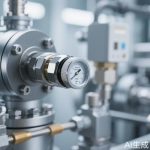In the intricate world of industrial automation, precision is paramount. Among the myriad components that ensure seamless operations, PLC temperature sensors stand out as silent guardians of efficiency and safety. These unassuming devices play a critical role in monitoring and controlling thermal conditions across countless industrial processes, from pharmaceutical manufacturing to food processing and beyond. As industries increasingly embrace smart manufacturing and Industry 4.0 initiatives, the importance of reliable temperature sensing integrated with Programmable Logic Controllers (PLCs) has never been more pronounced.
PLC temperature sensors are specialized devices designed to measure temperature and communicate this data directly to PLC systems. Unlike standalone temperature sensors, these integrated components form part of a sophisticated feedback loop that enables real-time adjustments to industrial processes. The marriage of temperature sensing technology with PLCs creates an intelligent system capable of maintaining optimal thermal conditions, preventing equipment damage, ensuring product quality, and enhancing overall operational safety. This integration represents a significant leap forward from traditional manual monitoring methods, offering unprecedented levels of automation and precision.
The technological evolution of PLC temperature sensors has been remarkable. Modern sensors employ various principles of operation, including resistance temperature detectors (RTDs), thermocouples, and thermistors, each offering distinct advantages for specific applications. RTDs provide excellent accuracy and stability for precise measurements, while thermocouples offer wide temperature ranges suitable for extreme environments. Thermistors deliver high sensitivity for applications requiring detection of minute temperature changes. These sensors convert thermal information into electrical signals that PLCs can interpret and act upon, creating a responsive system that automatically adjusts heating, cooling, or process parameters as needed.
Implementation of PLC temperature sensors brings numerous operational benefits to manufacturing facilities. By maintaining precise temperature control, manufacturers can significantly reduce energy consumption, minimize product waste, and prevent costly downtime caused by thermal-related equipment failures. In the food industry, for example, these sensors ensure proper pasteurization temperatures are maintained, critical for both safety and quality compliance. Pharmaceutical manufacturers rely on them to maintain strict environmental conditions required for drug production. The automotive industry uses temperature monitoring in painting processes where specific thermal conditions are essential for proper coating adhesion and finish quality.
The integration of these sensors with modern PLC systems has been further enhanced through Industrial Internet of Things (IIoT) connectivity. Smart temperature sensors can now transmit data to cloud platforms, enabling remote monitoring, predictive maintenance, and advanced analytics. Maintenance teams receive alerts before potential failures occur, while plant managers can access temperature trends across multiple facilities from a single dashboard. This connectivity transforms temperature monitoring from a reactive task to a proactive strategy, optimizing operations and reducing unexpected interruptions.
Selecting the appropriate PLC temperature sensor requires careful consideration of several factors. Application temperature range, required accuracy, response time, environmental conditions, and compatibility with existing PLC systems all play crucial roles in determining the optimal solution. Industrial environments often present challenges such as electromagnetic interference, vibration, corrosive substances, and extreme temperatures that sensors must withstand while maintaining reliable performance. Understanding these operational parameters ensures that chosen sensors will deliver consistent, accurate data that PLCs can effectively utilize for process control.
As manufacturing continues its digital transformation journey, PLC temperature sensors are evolving to meet new challenges and opportunities. Emerging technologies include self-calibrating sensors that maintain accuracy over extended periods, wireless sensors that simplify installation in hard-to-reach locations, and multifunctional sensors that measure temperature alongside other parameters like pressure and humidity. Artificial intelligence and machine learning algorithms are being integrated with temperature data to predict optimal process parameters and identify subtle patterns that human operators might miss. These advancements promise even greater efficiency, reliability, and intelligence in industrial temperature management.
The future of PLC temperature sensors looks increasingly sophisticated as they become integral components of smart manufacturing ecosystems. With advancements in materials science, we can expect sensors capable of operating in even more extreme conditions while delivering enhanced accuracy. The convergence of temperature sensing with other technologies will create comprehensive monitoring solutions that provide deeper insights into industrial processes. As manufacturers continue to prioritize efficiency, quality, and sustainability, the humble temperature sensor connected to PLC systems will remain an indispensable tool in achieving these objectives, quietly ensuring that industrial operations remain within optimal thermal parameters day after day.




Leave a Message